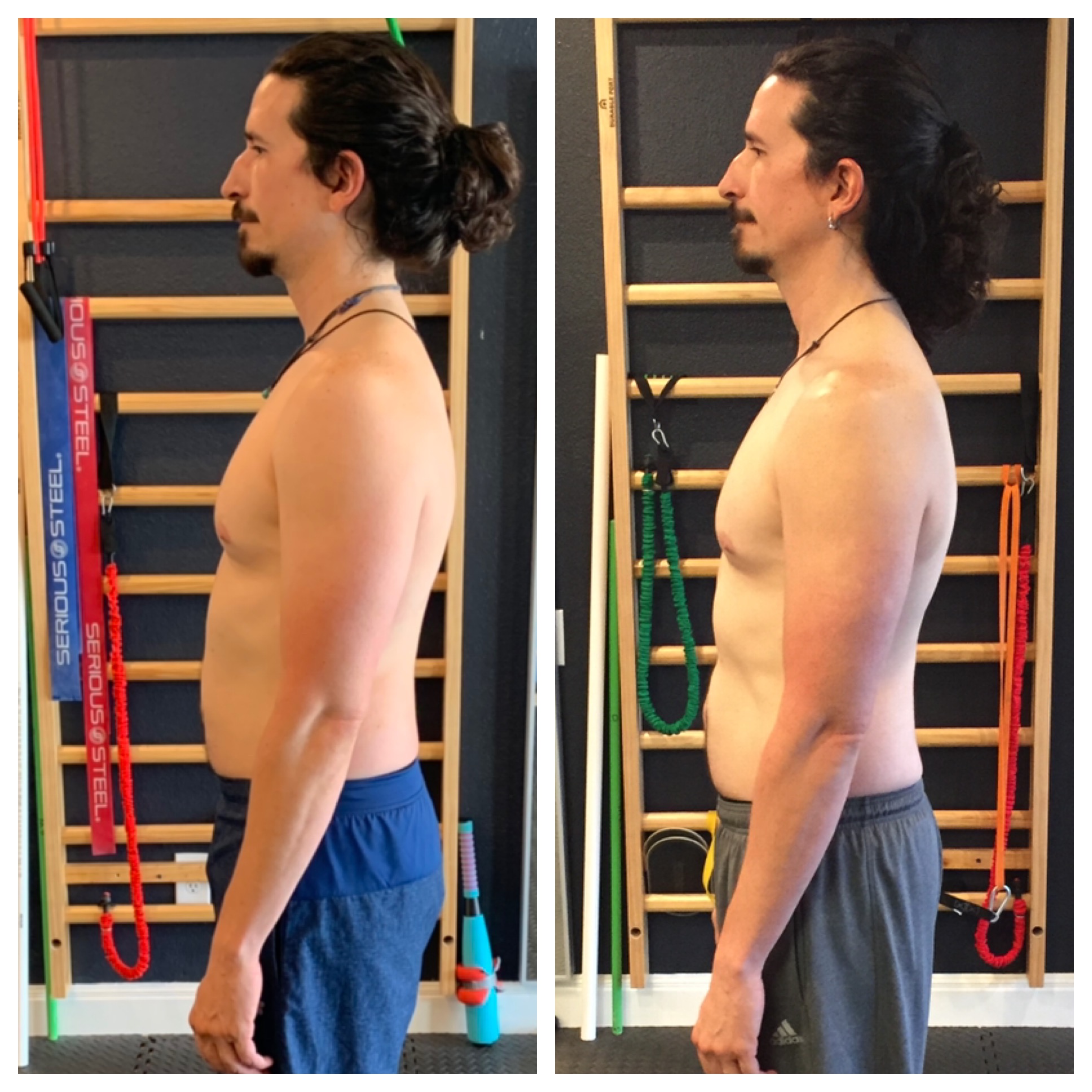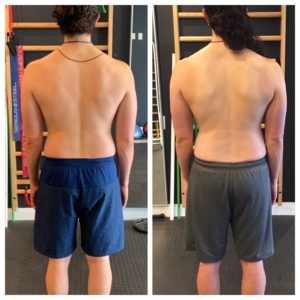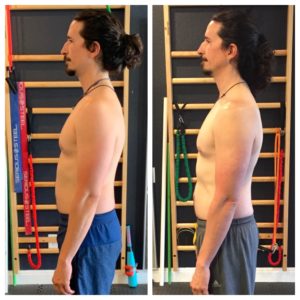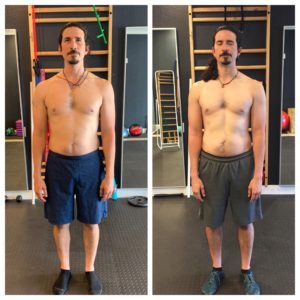It’s important to know common terminology that we use at this gym to effectively teach you how to move well.
The benefits of learning the function of your anatomy and the way it’s capable of moving will help you adjust your body during exercises to produce proper muscle contractions, in the correct muscle.
The big benefit to having the right muscle contracting properly is that it alleviates strain in the wrong muscles, and prevents pain in your joints.
When you think about anatomy, picture the human skeleton from 7th grade science class hanging in the back of the room. All of those boney structures are supported by your muscles (not the other way around) and they are all capable of moving, when your muscles contract.
So, your pelvis, femurs, ribcage, humerus, scapulae, ankles, feet, shoulders, elbows, etc., are all meant to move. And the muscles on top of them, move them. So when your muscles contract properly, your skeleton moves properly. Each muscle/muscle chain has a job to do and is in charge of moving certain structures. When a muscle is taught to contract at the wrong time, in the wrong way, or the wrong muscle contracting, chaos ensues and you aren’t able to move as well as you should. That’s when compensations start to manifest and poor body mechanics caused by poor muscle function, control your movement and eventually create a pull on your skeleton (which exacerbates muscle dysfunction) causing it to get stuck in a certain position.
When your skeleton can’t move out of a position then the muscle that’s causing it to be stuck there, is chronically contracting (tense) or is chronically flaccid (weak) and not strong enough to move your skeleton between spectrums of movement. That’s where the hard work comes in of reprogramming muscle function to change your posture (skeletal positioning) and allow your body the freedom to move in a multitude of directions- to handle the multiple forces acting upon it.
A lot goes in to restoring balance amongst the musculoskeletal system. First, you have to learn basic structural functions like tilts, shifts, and rotations, as well as extensions and flexions. Then, you need to learn how those functions apply to the parts of your body, like your pelvis, spine, ribcage, and limbs. Finally, depending where your skeleton is stuck we work to move it in the opposite direction. Creating enough tension in another muscle to release the tension in the muscle forcing your skeletal misalignment, or learning to contract a muscle more effectively that’s weak or dormant, causing your skeleton to shift because it doesn’t have enough support from that muscle. All of this sounds simple, and it mostly is, but it’s not easy. Think about your current ailment (that you’re aware of) and how long you’ve been dealing with it. That has become your new “normal” and your brain has been conditioned to accept this as how things are going to be, even though it might be detrimental to your body and long term wellbeing.
Let’s face it, a misaligned skeleton caused by poor functioning muscles will cause aches and pains that can be sharp and debilitating or gradually cause more problems over time. And this causes stress to your body because it’s not able to achieve homeostasis. So your physical posture not only looks bad, but you start to feel bad and the wear and tear on your physiological wellbeing from the subconscious stress being induced isn’t good for your long term health. So actually, exercising for the sake of exercising might not be what your body needs to actually be healthy.
Think about it, if your misaligned, which most of us are- us included- every time you move, whether you’re walking a few feet from your car to the store or your vigorously working out, your muscles are not working properly and you’re just reinforcing the same shoddy mechanics that are already hindering you. So if you’re 20 and have a structural dysfunction and you don’t do anything to resolve it, then 20 more years of improper workouts and general movement and you’re 40… and you feel 40, or 60. That’s called expediting the aging process. But if you decide to spend some time on fully rehabbing old injuries, fixing dysfunctions that popped up from bad habits or maybe you were born with, then you start to move better, and better movement supports better posture in your skeleton, and better aligned skeleton doesn’t cause pain, which doesn’t cause stress to your innate wellbeing.
So if you want to function, well, into your late life, then it starts now, no matter your age. All the damage, self inflicted or just by chance, can be undone (overtime) and you can live a pain free life! This isn’t just a personal training studio, this is biomechanics training that revolves around human function- so you can actually learn exercises that transfer to your life outside of the gym.
For more information about the function of your anatomy (shifts, tilts, rotations, etc.) check back for our next blog, covering the details on why these are key to unlocking your movement potential and how to actually perform them!



 doesn’t work, a body void of muscle tension won’t work optimally either. This is what sets the stage for pain and injury down the road
doesn’t work, a body void of muscle tension won’t work optimally either. This is what sets the stage for pain and injury down the road 









